Japan’s Prime Minister Shinzo Abe has recently been announcing that Japan will be reviewing its pacifist constitution that restricts its military to self defence operations only. Legislation allowing Japanese troops to be deployed in combat overseas is currently being debated and looks set to be signed into law soon. Prior to this back in 2014 the Japanese government had announced plans to commence arms exports of its military technology and hardware. With an expanding Chinese military in the South China Sea, and an increasingly unstable North Korea to its West, these recent events represents Japan’s strategic response to a change in the balance of power and security in East Asia.
Japan has already been expanding the role of its military for several years now. For example, in 2004 Japanese ground forces deployed to Iraq for a peacekeeping mission as part of the reconstruction efforts there after the American led invasion in 2003 and recently in 2009 Japanese naval assets participated in Anti-Piracy missions off the coast of Somalia. It is also a little known fact that up until January 2013 Japanese ground troops were deployed to the Golan Heights area of Israel as part of the United Nations peacekeeping buffer zone there between Israel and Lebanon. Despite these international deployments however this is the first time that Japan has announced a strategic change of direction in the role of its military.
Since the end of the Second World War, and the signing of the 1947 constitution written by the United States, Japan’s military has been restricted to a defensive force which has been reflected by the very title of the ‘Japan Self-Defense Forces’. Since the 1950’s Japan’s main security threat came from a Cold War invasion of Soviet forces on its northern island of Hokkaido. Japan has had a centuries old conflict with Russia over claims of ownership of the Island of Sakhalin which lies roughly 30 miles north of Hokkaido. During the end of the Second World War Sakhalin was annexed by Russia placing Hokkaido in a vulnerable position highlighting Japanese fears that the Soviet Empire would further expand and invade this northern part of the Japanese mainland. To counter this threat Japan placed the bulk of its military armour in Hokkaido where it remains to this day. Since the collapse of the Soviet Union in 1991 the threat of an armed invasion of Hokkaido was greatly reduced and Japan enjoyed many years of relative stability with low threats to its international security. However, recent events in East Asia have revealed a new emerging threat to Japan in the shape of China. In the last decade fuelled by economic growth China has sought to increase and expand its global military footprint and this has become a source of friction between the two countries. In November 2013 China very publically announced an Air Defence Identification Zone over the disputed waters where the Japanese controlled Senkaku chain of islands lay.

(U.S. Air Force photo/Tech. Sgt. Angelique Perez)
These islands are a source of tension of ownership between China, South Korea, Taiwan and Japan and are situated on the international boundary between South Japan and China. Adding to the tension is the fact that the islands are likely to be situated on rich deposits of oil and gas. The Japanese government reacted by strongly condemning China’s action and ordered its civil airlines to ignore the new requests attached to this Air Defence Identification Zone. This geopolitical occurrence highlights just one of many events that Japan has experienced recently with an increased amount of incidents in which China has sought to expand its influence in the region. Recently on a growing number of occasions Japan has had to scramble fighter jets to intercept aggressive Chinese air incursions over these disputed islands as China seeks to flex its muscles by increasing the amount of air activity dangerously close to Japanese airspace. Further to this, Japan has also seen an increase in maritime confrontations between the Japanese coast guard and Chinese fishing vessels in the South and East China Sea. Chinese fishing vessels have been increasingly intentionally straying into Japanese waters and Chinese Maritime surveillance ships have also been regularly spotted in and around the coastal waters surrounding the Senkaku Islands. China has built up a strong maritime force in this region and, despite having a strong navy, Japan’s coast guard is stretched thin and struggles to match Chinese capabilities in this area. Although not a direct threat to Japan’s sovereignty China does however represent a security threat to its geographic and economic interests which must not go unchallenged. Japan now has to switch focus from an armoured Russian invasion from the North to a maritime and air defence threat from China to its South West.
[su_pullquote]Even more of a concern however is North Korea’s ongoing attempts to obtain nuclear weapons.[/su_pullquote]
Another source of threat comes from North Korea. Not only does North Korea represent a global security threat to the international community in general it also provides a threat that is geographically too close for comfort to Japan. Situated several hundred miles to its west, Japan has come under the cross fire of North Korea missile tests as the government in Pyongyang seeks to increase its presence on the international stage and to use such tests as a political tool against the United States. Notably, in 2006, North Korea fired missiles which landed in the Sea of Japan to the north of the country and even prior to this in 1998 it fired a missile which actually flew over Japan and landed to its east into the Pacific Ocean. These missile ‘tests’ continue to this day with yet again another short range missile fired towards the direction of Japan in early March 2014 and tensions further escalated when North Korea fired two medium range ballistic missiles on 26th March 2014 both of which again landed in the Sea of Japan. The Japanese government responded diplomatically and politically several days later in the beginning of April 2014 with a public announcement that it had deployed a warship with authority to intercept any such North Korean missile that poses a threat. It is highly likely however that such authority and capability was already in place and any such announcements by Japan were for geopolitical purposes and highlight the difficulties faced with the limited options available when dealing with North Korea. Although these recent round of missile firings might be North Korea responding to the joint annual military exercises between South Korea and America it provides a worry to Japan’s security as well as these tests have proven that Japan is well within missile range of North Korea who has the capability to strike Japan should it wish to do so with its ‘Musudan’ class of ballistic missile.
Even more of a concern however is North Korea’s ongoing attempts to obtain nuclear weapons. Nuclear tests by North Korea in 2009 and 2013 were met by swift condemnation by Japan. The consequences to Japan of a nuclear armed North Korea could also mean South Korea following suit and escalating its military and defence capabilities to obtaining nuclear weapons. This would leave Japan isolated and in a position of weakness on a global military scale in a region that would be dominated by nuclear armed countries. Although already living under the umbrella of a nuclear armed China there are certain assurances that this is under the conditions of a relatively stable political and economical framework that the government in China provides. The same cannot be said of a nuclear armed North Korea providing Japan with a second parallel channel of conditions again causing the government to review its military constitution in order to counter these renewed threats.
Despite its pacifist constitution Japan has always historically had a strong military. In August 2015 its defence budget was announced to be a record 5.1 trillion Yen ( approx $42 Billion USD) ranking it 7th place in the world’s military spending. Although Japan’s Air Self-Defense Force has a number of aging F-4’s the majority of its fighter jets are F-15’s which are noted for their strong air superiority capabilities. These F-15’s are complimented by a contingent of fighters in the shape of the F-2. Built under licence by Mitsubishi the F-2 is based on the Lockheed Martin F-16 giving the Japan Air Self-Defense Force a multirole strike capability in addition to the strong air superiority provided by the F-15’s. For its investment in the future the Japanese government announced in December 2011 that it intended to purchase over 40 of the new 5th generation Lockheed Martin F-35 stealth fighters. The conventional take off and landing F-35A variation have been ordered and when Japan starts to receive these new fighters from 2016 onwards it will help to provide it with an air force that can match, or exceed, any other capability within the region and will help it to challenge China’s own foray into the 5th generation fighter jet market with its Chengdu J-20 stealth fighter due for service sometime after 2018. The JASDF will also further supplement its air force and attempt to match China with its own 5th generation fighter in the shape of the Mitsubishi ATD-X stealth fighter. Although still within the prototype phase this domestically produced stealth fighter will begin a round of test flights ‘sometime in 2014’ with the aim of eventually replacing the F-2 well into the next decade. Japan has strategically based its air power towards air superiority and defensive capabilities and this looks set to continue with the acquisition of these stealth fighters in the future.
Being an island nation Japan also has a strong navy and has more destroyers in its fleet than any other navy, second to the United States. The main strength of the Japanese navy, officially titled the Japan Maritime Self-Defense Force (JMSDF), is the four SM-3 equipped-Aegis ‘Kongo’ Class destroyers. The Kongo class are heavily armed guided missile destroyers equipped with the Aegis combat system. The Aegis system is a powerful combination of radar and computer technology allowing these destroyers to track and destroy multiple enemy targets simultaneously. The JMSDF is also the only other navy, again along with the United States, to have the SM-3 weapon system giving it a powerful medium range missile interception capability. The SM-3 missile is built by the Raytheon defence company and is a top of the range ballistic missile interceptor capable of being launched by land or sea with a 700km to 2,500km range depending on variant. Tied with Australia and South Korea, Japan also has the largest fleet of submarines in the Pacific region. Its fleet of diesel powered submarines ensure that its shipping lanes are kept secure and it has invested heavily with the purchase of 5 modern and highly capable ‘Soryu’ class attack submarines with another 5 on the table to be commissioned to head its already large existing fleet. The JMSDF is also one of the few navies in the world to be equipped with an aircraft carrier with its ‘Izumo’ class ship. Officially designated as a ‘helicopter carrier’ it is fully designed and equipped to handle VTOL aircraft such as the F-35b and plans are in place to order a second carrier. For a ‘Maritime Defense Force’ Japan’s navy is remarkably powerful with its huge fleet of destroyers and submarines. Japan is 100% dependent on importing natural resources for its energy needs so the navy’s primary focus is on securing its shipping lanes and surrounding waters. With the acquisition of its existing aircraft carrier, albeit a ‘helicopter carrier’, and a second one on order Japan’s navy may be looking at taking on a more offensive role and reserving the capability of projecting its power much further.
Japan also has some powerful land based weapons systems such as the Patriot anti-ballistic missile battery in the updated PAC-3 version. The Patriot system provides a long range counter measure against ballistic and cruise missile attack which Japan deploys specifically against the threat of such attack by North Korea. The Japan Ground Self-Defense Force itself is well equipped with the modern Type 90 Main Battle Tank, Type 96 Infantry Fighting Vehicle and modern anti tank and artillery systems. As reviewed in a previous chapter Japan’s ground forces have been strategically geared towards a heavily armoured force to defend its northern mainland and Japan has however not lost sight of its need for internal defensive measures and despite cut backs since the end of the cold war its current man power with its ground forces currently stands at an estimated 155,000 soldiers and it continues to develop its defensive land based platforms such as the current production of its 4th generation Type 10 Main Battle Tank to boost its armoured defensive capability. Made by Mitsubishi Heavy Industries this new MBT will pack a powerful punch with its L44 120mm smoothbore gun and will have advanced nano-crystal steel and ceramic lightweight armour giving it matching capabilities of any like for like system in the future.
As well as all this current military investment in December 2013 the Japanese government announced its intention to implement a new 5 year package to further increase its defence budget and to invest in new areas such as drones for an intelligence and surveillance capability, Osprey aircraft for air assault and more interestingly, in light of China threatening Japan’s Senkaku islands, the announcement of the creation of a new marine unit with new amphibious vehicles for the specific task of retaking islands.
Back in 2014 U.S. President Barack Obama visited Japan as part of a regional tour and sought to reassure the Japanese government that any dispute with China over the Senkaku islands would be covered by the US-Japan security treaty. However, with America having been distracted by two wars in the Middle East for the past decade and its focus drawn away from East Asia it has increasingly put pressure on its Allies in the Pacific to share more responsibility for their own security in this region. Since the end of the Second World War Japan as relied heavily on America for its security and this has been reflected by the large numbers of American troops that has historically been stationed there, mainly on the southern island of Okinawa. However over the years America has been steadily reducing its numbers of troops based on Japanese soil and there has been increasingly strong internal political pressure from within Japan to remove all US personnel from Japanese territory entirely. Japan has always had a strong military and in order to deploy this effectively to counter the growing Chinese military expansion, and the increasing threat from North Korea, it has no option other than to implement this strategic change of direction in its pacifist constitution in order to balance the power of its interests and security in the East Asia region. Japan must now leave behind its cold war mentality of the Russian threat to its northern borders and instead prepare for low intensity conflicts in the air and sea as shipping routes, energy resources and land disputes look likely to be the biggest threat to its stability. With the likelihood of countries in the region forming military alliances Japan may be forced to join any such pacts under the fear of being left isolated, and it cannot do this with a passive constitution.
About the author: James Steels has over 10 years security and police experience and currently serves as a reserve police officer with Cambridgeshire Constabulary, UK. Having travelled extensively throughout Israel and the Middle East he specialises in counter-terrorism, intelligence and security as well as East Asia defence analysis. He has recently enrolled with St.Andrews University and is completing a HNC in Terrorism Studies.



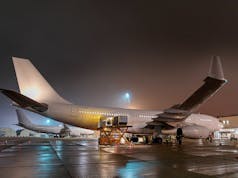

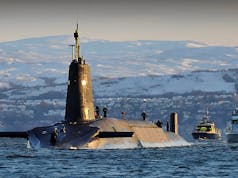
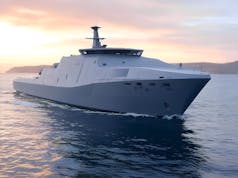
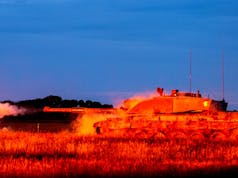

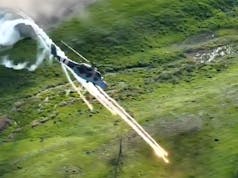


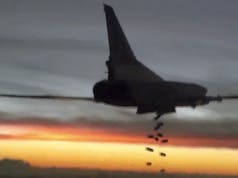

north korea CITY
Re: The JMSDF is also one of the few navies in the world to be equipped with an aircraft carrier with its ‘Izumo’ class ship. Officially designated as a ‘helicopter carrier’ it is fully designed and equipped to handle VTOL aircraft such as the F-35b and plans are in place to order a second carrier.
Hmm….off the top of my head, there’s Japan, South Korea, Australia, Egypt, Italy, France, USA, Spain, UK, Russia, China and India. That’s rather more than few.
Izumo is indeed designed with a possible fast jet future, but would require refit for embarked F-35B ops (and it’s STOVL, not VTOL). So, no, sorry, she’s not remotely equipped for that at the moment.
It’s incorrect to state that plans are in place to order a second Izumo. Why? Because it’s already been built, and is named Kaga (DDH184), seen in this video – https://youtu.be/iO4shR-jy6s
Re: Rob H, Based on the ‘off the top of your head’ assumptions it’s still remarkable that Japan is only one of a dozen countries to operate such a class of ship despite its armed forces supposedly being for defensive purposes only? I assume this is the general theme that the author was trying to get across. Secondly, did you stop to consider that the link to the 2017 YouTube video you posted is EXACTLY the ship this article was referring to when it was published in 2015? So, no, sorry, not sure what you felt your comments achieved…